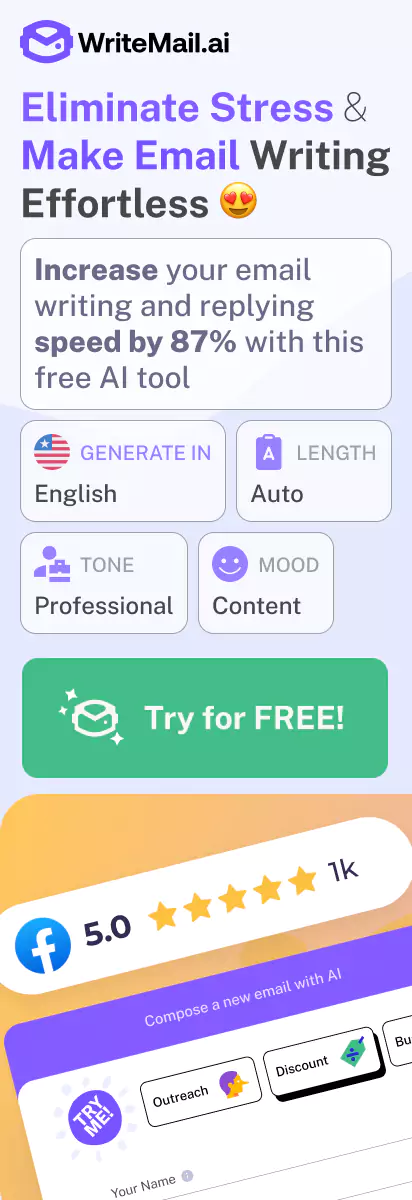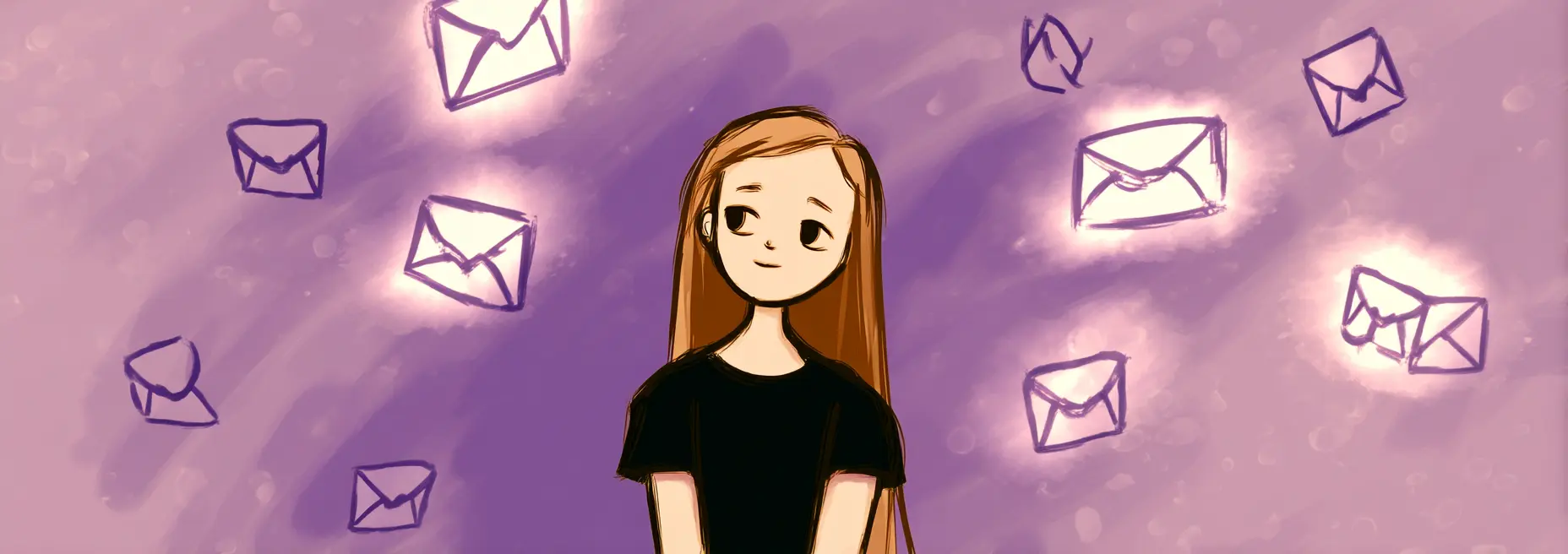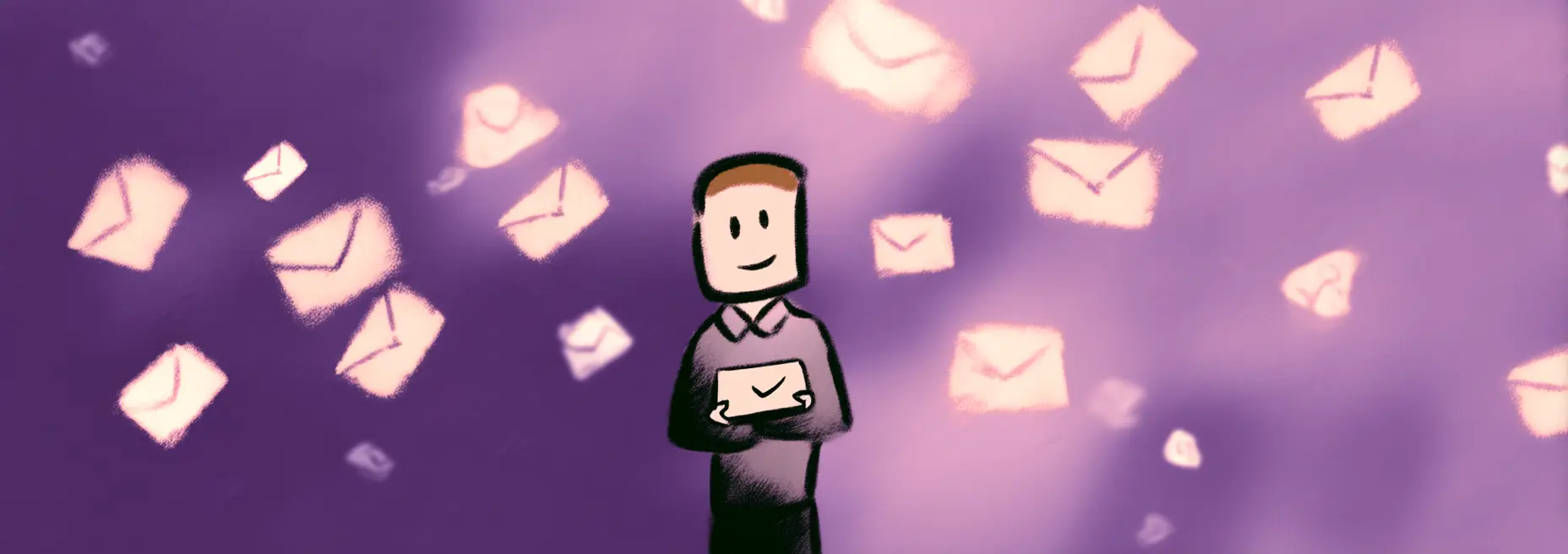I still remember the moment I realized how much my emails were hurting my career. My boss had forwarded my message to the entire department as an example of “how not to communicate.” Talk about mortifying! That painful experience taught me something valuable: in today’s workplace, your email style is your digital first impression.
You might be surprised to learn that the average professional spends 28% of their workday reading and answering emails. That’s nearly 2.5 hours daily crafting messages that shape how colleagues and clients perceive you. Yet surprisingly, only 17% of professionals report receiving any formal training on email communication.
Whether you’re sending a quick update to your team or pitching to a potential client, your email etiquette can make or break your professional relationships. Poor email habits don’t just cause miscommunications—they can permanently damage your reputation and credibility.
In this guide, I’ll walk you through the essential rules of email etiquette that I’ve learned (sometimes the hard way) during my 15+ years in corporate communications. You’ll discover how to craft messages that get opened, read, and respected, while avoiding the common pitfalls that undermine your professionalism.
When you master these principles, you’ll notice immediate improvements: faster responses, clearer communication, and stronger professional relationships. Plus, you’ll save countless hours by preventing the back-and-forth exchanges that result from poorly constructed emails.
Let’s start by examining the foundation of effective professional emails: crafting subject lines that actually get your messages opened and prioritized. This simple skill alone can dramatically increase your email effectiveness starting today.
Crafting the Perfect Subject Line: Your Email’s First Impression
Let me ask you something: have you ever ignored an email because the subject line didn’t grab your attention? You’re not alone. The subject line is your email’s handshake – it’s the first impression that determines whether your message gets opened or sent straight to the trash folder.
The 6-10 Word Sweet Spot
When you’re writing subject lines, size matters. Research consistently shows that subject lines containing 6-10 words achieve open rates 47% higher than their longer counterparts. This isn’t surprising when you consider how we all skim our inboxes, especially on mobile devices where longer subject lines get cut off.
Think about it – when you’re facing an inbox with dozens or hundreds of messages, you’re making split-second decisions about what deserves your attention. I recommend that you aim for that 6-10 word sweet spot that gives enough information without overwhelming the recipient.
Strategic Keywords and Clarity
The most effective subject lines immediately answer the recipient’s unspoken question: “Why should I care about this email?” When you craft your subject line, focus on including:
- Action words that clearly indicate what you’re asking for or providing
- Specificity that tells the recipient exactly what the email contains
- Relevance to the recipient’s role, interests, or current projects
You should avoid vague subject lines like “Quick question” or “Update” that force the recipient to open the email just to figure out what it’s about. Instead, I recommend being crystal clear about your purpose.
Examples of Subject Line Transformations
Ineffective: Meeting
Effective: Marketing Strategy Meeting: April 5, 10AM ET
Ineffective: Question about the report
Effective: 3 Questions on Q1 Sales Report – Response Needed
Ineffective: Following up
Effective: Following Up: Website Redesign Proposal Decision
Tailoring Subject Lines for Different Scenarios
Different types of emails require different subject line approaches. Let me walk you through how you should adapt your subject lines based on your email’s purpose:
- For requests: Be direct about what you need and include any relevant deadlines. For example: “Website Copy Approval Needed by Friday.”
- For updates: Summarize the key information and its importance. Try something like: “Q2 Sales Results: 15% Above Target.”
- For urgent matters: Use the word “Urgent” sparingly and only when truly necessary, followed by the specific action required. For instance: “Urgent: Server Downtime Response Required.”
- For FYIs: Clearly label information-only emails to set expectations. Consider: “FYI: New Office Security Procedures Starting Monday.”
When you tailor your subject lines this way, you’re not just informing recipients about the content – you’re also setting clear expectations about the action or response required.
AI Assistance for Subject Line Optimization
Even the best writers sometimes struggle with condensing complex topics into brief, compelling subject lines. This is where AI tools can be particularly valuable. WriteMail.ai can analyze your email content and suggest contextually appropriate subject lines that balance brevity with information density.
I find that using such tools can be especially helpful when you’re writing to different audiences or dealing with complicated topics that are difficult to summarize concisely. The AI considers the email’s purpose, content, and recipient to generate subject lines that are likely to improve open rates.
Remember, your subject line is competing for attention in a crowded inbox. When you invest time in crafting it thoughtfully, you dramatically increase the chances that your carefully written email will actually be read and acted upon. A well-crafted subject line doesn’t just get your email opened – it prepares the recipient for the content inside, setting the stage for effective communication.
Salutations and Sign-offs: The Bookends of Professional Emails
Think of your email as a professional conversation framed by two critical elements: how you say hello and how you say goodbye. These bookends might seem like small details, but they set the tone for your entire message and leave a lasting impression. I’ve found that mastering these elements can dramatically improve how your emails are received.
Choosing the Right Greeting Based on Relationship and Context
When you open your email, you’re establishing the relationship dynamic immediately. The greeting you choose signals to your recipient how you perceive your professional relationship and sets expectations for the communication that follows.
Your choice should reflect three key factors:
- Relationship formality: How well do you know this person? Is this your first interaction or your hundredth?
- Organizational hierarchy: Are you writing to a peer, a subordinate, or someone senior to you?
- Cultural context: Different cultures have varying expectations around formality in business communication.
I recommend erring on the side of formality when you’re uncertain. You can always become more casual in future communications, but it’s much harder to rebuild a professional impression after starting too informally.
The Psychology Behind Personalized Salutations
When you take the time to use someone’s name correctly in your greeting, you’re doing more than following etiquette — you’re activating a powerful psychological trigger. Research shows that personalized salutations can increase response rates by up to 21%. This happens because our brains are uniquely attuned to our own names.
When I write “Dear Mr. Johnson” instead of a generic “Hello,” I’m showing that this isn’t a mass email — it’s a deliberate communication meant specifically for my recipient. This small personalization signals respect and attention to detail, priming the recipient to engage more thoughtfully with your message.
Choosing the Right Sign-off
How you end your email carries subtle implications about your expectations, relationship, and next steps. Consider these common closings and what they communicate:
- “Regards” or “Best regards”: Professional, neutral, appropriate for most business situations
- “Sincerely”: More formal, ideal for first-time communications or formal requests
- “Thanks” or “Thank you”: Appreciative, appropriate when someone has done or will do something for you
- “Thanks in advance”: Presupposes compliance with a request, which can feel presumptuous if used incorrectly
- “Cheers”: Friendly and casual, best reserved for colleagues you have an established relationship with
- “Looking forward”: Indicates expectation of future interaction, good for emails that require follow-up
The sign-off you choose should align with both your relationship and the purpose of your email. If you’re making a request, “Thank you for your consideration” acknowledges the recipient’s time. If you’re providing information, “Please let me know if you need anything else” signals availability for follow-up.
Remember: Your closing is the last impression you leave — make it reinforce your professionalism.
Email Example: Appropriate Salutations and Sign-offs for Different Relationships
Example: Adapting greetings and closings based on relationship context
For a new business contact:
For a direct manager:
For a colleague you work with regularly:
For an important client:
When you’re communicating across borders, greeting norms can vary significantly. What seems appropriately formal in one culture might appear overly stiff or unnecessarily casual in another. I’ve found that these considerations are particularly important in building international business relationships:
- German business culture tends to favor formality, with titles and last names being the norm until a relationship is well-established
- French professional emails often begin with “Bonjour” followed by Monsieur/Madame and the surname
- Japanese correspondence typically includes honorifics (-san, -sama) and acknowledges hierarchy
- Brazilian business emails may be more personally warm from the outset, even in formal situations
- UK professionals often appreciate a balance of formality and friendliness
If you’re unsure about cultural expectations, observe how your international colleagues sign their own emails. This can provide valuable clues about their preferred level of formality. When in doubt, starting slightly more formal and then matching their style in subsequent exchanges is a safe approach.
Remember that salutations and sign-offs are more than mere conventions — they’re powerful signals of respect, understanding, and professionalism. By thoughtfully crafting these elements of your emails, you create a framework that enhances everything between them. The few seconds you invest in choosing the right greeting and closing can significantly impact how your entire message is received.
Body Language: Structuring Your Email Content for Maximum Impact
When you write emails, you’re essentially creating a visual conversation. Just as your body language speaks volumes in face-to-face interactions, the structure of your email communicates far more than just the words you choose. I’ve found that well-structured emails not only get read more often but also receive faster responses — 36% faster, according to recent research.
The Inverted Pyramid Approach
Think about how you read news articles. They typically start with the most critical information and then provide supporting details. This is called the inverted pyramid approach, and it’s perfect for business emails. When you place your most important points at the beginning, you’re respecting your recipient’s time and ensuring your key message isn’t buried.
I recommend that you structure your emails with:
- Your main point or request in the first paragraph
- Supporting information in subsequent paragraphs
- Background context or additional details at the end
This structure helps busy professionals quickly grasp what you need, even if they’re only skimming your message. In fact, studies show that emails structured this way receive responses 36% faster than emails where the main point comes later.
The 2-3 Sentence Rule for Digital Readability
When you’re staring at a wall of text in an email, what’s your first reaction? If you’re like most people, you probably feel a sense of dread. Long paragraphs are difficult to digest on digital screens and mobile devices.
For optimal readability:
- Keep paragraphs to 2-3 sentences maximum
- Use white space generously between paragraphs
- Break up information into digestible chunks
- Consider using single-sentence paragraphs for emphasis
This approach significantly improves comprehension and response rates. When you make your emails easy to read, you show respect for your recipient’s cognitive load and time constraints.
Effective Use of Bullet Points and Numbered Lists
When you need to convey complex information or multiple items, I strongly recommend using bullet points or numbered lists. They serve several important functions:
- Visual organization: They break up text and create scannable content
- Clarity: They prevent important points from getting lost in paragraphs
- Processing ease: They allow recipients to digest information in chunks
- Action orientation: Numbered lists work especially well for sequential steps or prioritized items
Remember to keep your bullet points parallel in structure and reasonably brief. You want them to enhance readability, not create a different kind of text wall.
Before and After: Email Structure Transformation
Notice how the restructured email immediately communicates what’s needed, uses visual organization tools, and makes the information much easier to process. The recipient can quickly understand the situation and required actions without wading through a paragraph of mixed information.
Visual Hierarchy and Formatting
Beyond basic structure, consider how visual hierarchy can enhance your email’s effectiveness. When you use formatting deliberately, you guide your reader’s eye to the most important elements:
- Bold text for key points or action items
- Italics for emphasis (use sparingly)
- Horizontal lines to separate distinct sections
- Consistent spacing between elements
Be careful not to overdo formatting—you want to enhance readability, not create visual chaos. I recommend limiting yourself to one or two formatting techniques per email to maintain professionalism.
Optimizing Email Structure for Different Purposes
Different types of emails require different structures. When you’re aware of these variations, you can adapt your approach accordingly:
For decision-making emails:
- Start with the decision needed
- Provide context and supporting evidence
- Present options with clear pros and cons
- End with a recommended course of action and deadline
For status update emails:
- Lead with overall status (on track, at risk, delayed)
- Highlight key accomplishments since the last update
- Address challenges or blockers
- Outline next steps with timeframes
For inquiry emails:
- Begin with a clear, specific question
- Provide only the context necessary to answer the question
- Use numbered questions if asking multiple things
- Specify when you need the response
By tailoring your structure to your purpose, you make it easier for recipients to provide exactly what you need.
Remember, effective email structure isn’t just about aesthetics — it’s about communication efficiency. When you take the time to organize your thoughts in a clear, logical way, you demonstrate respect for your recipient’s time and increase the likelihood of getting the response you need. In our next section, we’ll explore how to strike the right balance with tone and language once you have your structure in place.
Tone and Language: Striking the Right Balance
Have you ever sent an email and immediately wished you could snatch it back from cyberspace? I certainly have. The tone we use in professional emails can make or break our relationships and reputation. Finding that perfect balance between overly stiff formality and inappropriate casualness is an art form worth mastering.
Research backs this up. A fascinating LinkedIn study revealed that overly casual language reduced perceived competence by 28%. Think about that—your expertise and capabilities might be discounted by nearly a third just because you wrote “Hey there!” instead of “Hello” or included too many exclamation points.
The Science of Email Tone
When you’re writing emails, you’re not just conveying information — you’re projecting your professional identity. Without facial expressions and voice inflection to help, your word choice becomes the sole ambassador of your intentions.
I recommend approaching email tone with these guidelines:
- Match the formality to the relationship: The tone you use with a first-time client should differ from what you use with a colleague you’ve worked with for years.
- Consider the situation: Delivering difficult news requires a different tone than sharing a successful outcome.
- Remember cultural context: What sounds appropriately friendly in one culture might seem disrespectful in another.
Emotional Intelligence in Written Communication
When we communicate face-to-face, we have the benefit of reading micro-expressions and hearing vocal cues. In email, you’re working without these tools, making emotional intelligence even more crucial.
I’ve found these strategies particularly helpful:
- Re-read before sending: After writing an email, especially one addressing a sensitive topic, take a moment to read it as if you were the recipient.
- Watch for unintended tone: Phrases like “as I mentioned before” can come across as condescending, even when that’s not your intention.
- Be cautious with humor: What seems funny to you might fall flat or even offend others, particularly across cultural boundaries.
Remember: Once you hit send, you can’t control how your message is interpreted—only how carefully you craft it.
Finding the Sweet Spot: Professional Without Being Robotic
You don’t need to write like a legal document to sound professional. In fact, unnecessarily complex language often undermines clarity. Instead, aim for warm professionalism — respectful, clear, and human.
The most effective professional emails balance authority with approachability and precision with personality.
Here’s how you can achieve this balance:
- Use contractions: “I’m” and “we’ll” sound more natural than “I am” and “we will” without sacrificing professionalism.
- Incorporate brief personal touches: “I hope you had a good weekend” humanizes your message without veering into overly personal territory.
- Express gratitude: A simple “Thank you for your quick response” acknowledges the other person’s efforts.
The Tone Triple Check
When in doubt about your email’s tone, run it through this three-question filter:
- Would I say this in a face-to-face professional setting?
- Could this be misinterpreted if the reader is having a stressful day?
- Does this language align with how I want to be perceived professionally?
If any answer gives you pause, it’s worth revising your message.
Examples of Tone in Action
Too Casual:
Too Formal:
Appropriately Professional:
Cultural Sensitivity in Language Choice
If you work in a global environment, cultural awareness becomes even more critical. What’s considered appropriately direct in some cultures may be perceived as rude in others, while what seems politely indirect in some contexts might appear evasive elsewhere.
When writing to colleagues or clients from different cultural backgrounds:
- Research cultural communication norms: Understanding expectations around formality, directness, and hierarchical acknowledgment can save you from unintentional faux pas.
- Be explicit about expectations: When requesting action or information, clearly state deadlines and requirements.
- Avoid idioms and colloquialisms: Phrases like “ball in your court” or “touch base” might not translate well across cultures.
Adapting Tone for Different Email Types
The purpose of your email should guide its tone. Consider these adjustments for different scenarios:
- Request emails: Be clear but courteous. “I would appreciate your help with…” strikes a better tone than “I need you to…”
- Problem-solving emails: Maintain a collaborative tone rather than an accusatory one. “How can we address this issue?” works better than “This isn’t working.”
- Recognition emails: Allow yourself to be more warmly enthusiastic. Genuine appreciation deserves expression.
Finding the right tone isn’t always easy, especially when you’re communicating across cultures or during stressful situations. AI-powered email assistants can help adjust your tone according to the recipient, relationship, and purpose, ensuring consistent professionalism even if English isn’t your first language.
Remember, the tone of your emails shapes how others perceive not just your message, but you as a professional. Taking a few extra moments to consider and refine your tone is always time well spent.
Response Etiquette: Timing, Thoroughness, and Threading
Ever sent an email and anxiously waited for a response, wondering if you’ve been ignored? Or perhaps you’ve been on the receiving end of dozens of emails, feeling overwhelmed about how quickly you should respond to each one. Mastering response etiquette isn’t just about being polite—it’s about maintaining professional relationships and ensuring efficient communication. Let me walk you through the essentials of timing, thoroughness, and threading that will elevate your email responsiveness.
The 24-Hour Rule: When to Respond
The unspoken expectation in most professional settings is that emails should receive a response within 24 hours during the workweek. However, this standard varies significantly across industries. Research from the Harvard Business Review shows that in client services and sales, the expected response time shrinks to just 2-4 hours, while in academia or research-based fields, 48 hours might be perfectly acceptable.
I recommend following these response time guidelines based on your industry:
- Client services/sales: 2-4 hours during business hours
- Healthcare/emergency services: 1-6 hours for non-urgent matters
- Corporate/office environments: 24 hours
- Creative industries/project-based work: 24-48 hours
- Academia/research: 48-72 hours
If you can’t provide a complete response within the expected timeframe, I suggest sending a brief acknowledgment email. Something as simple as “I’ve received your email and am looking into this. I’ll get back to you with a full response by [specific time]” works wonders. This acknowledgment reduces anxiety for the sender and buys you time to craft a thorough response.
The Art of Thorough Responses: Comprehensive Without Overwhelming
When responding to emails, always address all questions or points raised in the original message. Nothing is more frustrating than receiving a response that only addresses half of what you asked, necessitating another round of emails.
Here’s my approach to crafting thorough responses:
- Use the mirroring technique: Reference specific points from the original email in your response
- Employ numbered or bulleted lists: When answering multiple questions, organize your responses in the same order they were asked
- Balance detail with brevity: Provide enough information to be helpful without writing a novel
- Clarify next steps: End with clear action items or expectations for moving forward
While thoroughness is important, be mindful of the recipient’s time. When you need to send a particularly detailed response, consider putting the most critical information first, followed by supporting details. This inverted pyramid approach ensures that even if the recipient only skims your email, they’ll catch the most important points.
Email Thread Management: The Art of Conversation
Proper thread management keeps conversations organized and accessible. But when should you continue a thread versus starting a new one? I’ve found these guidelines particularly helpful:
Continue the existing thread when:
- The topic remains the same as the original conversation
- You’re responding within 5-7 days of the last email
- There’s value in preserving the conversation history for context
- Multiple stakeholders are involved and need the full conversation history
Start a new thread when:
- Introducing a completely new topic
- Reviving a conversation after more than a week of inactivity
- The subject line no longer accurately reflects the content
- The email thread has become excessively long (more than 10-15 exchanges)
- You want to include new recipients who don’t need the previous conversation history
When continuing a thread, I recommend updating the subject line by adding “Re:” or “[UPDATE]” if the focus has shifted slightly. This maintains the connection to the original conversation while signaling the evolution of the discussion.
Example: Proper Threading and Comprehensive Response
Notice how this response maintains the original email thread but updates the subject line to indicate additional information. The response systematically addresses each question, provides specific data where requested, and closes with a clear next step that requires action from the recipient.
Managing Inbox Overload Efficiently
When facing email overload, the quality of your responses shouldn’t suffer. Consider these strategies to maintain thorough, thoughtful responses even when pressed for time:
- Batch similar emails: Group emails requiring similar responses and address them consecutively
- Create thoughtful templates: Develop frameworks for common response types that you can customize
- Use the “touch it once” principle: When you open an email, commit to responding or scheduling time for a response
- Leverage AI assistance: Tools like WriteMail.ai can help generate complete, thoughtful responses more efficiently while maintaining your personal voice
I’ve found that dedicating specific blocks of time to email responses rather than constantly monitoring my inbox helps me provide more thoughtful, comprehensive replies. This approach also prevents emails from fragmenting your productive work time.
Remember, good response etiquette isn’t just about replying quickly—it’s about responding thoughtfully in a timeframe that respects both your workload and the sender’s needs. When you master this balance, you’ll find your email communications become significantly more effective and your professional relationships strengthen as a result.
Advanced Etiquette for the Modern Professional
As you grow in your career, the complexity of your email communications will inevitably increase. I’ve found that mastering advanced email etiquette separates truly polished professionals from the rest. Let’s explore some sophisticated email practices that will help you navigate complex workplace communications with confidence.
Strategic Use of CC, BCC, and Reply All
Have you ever felt that sinking feeling after receiving an unnecessary “Reply All” from a colleague? You’re not alone. Research shows that unnecessary CCs cost companies an average of 5 hours per week per employee in lost productivity. When you’re deciding who to include in your emails, I recommend following these principles:
- TO field: Use this only for people from whom you need a direct response or action
- CC field: Include only those who need to be kept informed but aren’t expected to respond
- BCC field: Use sparingly and ethically—primarily for protecting privacy in mass emails or when you need to loop someone in confidentially
- Reply All: Before clicking, ask yourself: “Does everyone on this thread genuinely need my response?” If the answer isn’t a clear yes, reply only to the sender
Remember, each person you add to an email creates an obligation for them to read and process your message. Be respectful of your colleagues’ time and attention by being intentional about who you include.
Managing Introductions and Email Forwarding
When you’re connecting people via email or sharing someone else’s message, you’re handling something quite valuable: professional relationships and private communications. I always follow these guidelines, and I suggest you do too:
- For introductions: Always get permission before connecting people, and use the double opt-in method (confirming with both parties separately before making the introduction)
- When forwarding: Ask for permission before forwarding someone’s email to another recipient
- Provide context: Always add your own note explaining why you’re making the introduction or forwarding the message
Think of email introductions as digital handshakes—they should be thoughtful, purposeful, and considerate of all parties involved.
Proper Introduction Email Example:
Proper Forwarding Protocol Example:
Email Accessibility Considerations
When you craft emails, it’s important to consider that your recipients may have different abilities and needs. I’ve learned that accessible emails are more effective for everyone, not just those with disabilities. Here’s how you can make your emails more accessible:
- Use descriptive hyperlink text (e.g., “View September Report” instead of “Click here”)
- Provide alt text for images when they contain important information
- Maintain high contrast between text and background colors
- Use a clear hierarchy with headers and white space for easier reading
- Avoid relying solely on color to convey meaning
- Keep your formatting simple and consistent
Making your emails accessible isn’t just courteous — it’s good business. You never know who might end up reading your message or in what circumstances they’ll be consuming it.
Using Templates and AI Assistance Without Losing Your Personal Touch
As you deal with increasing email volume, templates and AI writing assistance can be lifesavers. I use these tools regularly, but I’ve discovered that maintaining personalization is key to their effectiveness. Here’s how you can leverage technology while keeping your communications authentic:
- Customize templates for different audiences and scenarios
- Always personalize the opening and closing of template-based emails
- Reference specific details from previous conversations
- Edit AI-generated content to match your natural voice and communication style
- Add personal touches that reflect your relationship with the recipient
Tools like WriteMail.ai can help you create consistent, professional emails while maintaining your unique voice. The platform’s customization capabilities ensure that you save time without sacrificing the personal connection that makes email communication effective.
“The true art of email communication in the digital age lies not in avoiding technological assistance, but in using it to enhance rather than replace your authentic voice.” – Sherry Turkle, Author of “Reclaiming Conversation”
I’ve found that the most sophisticated email communicators don’t shy away from using modern tools—they simply ensure that technology serves their communication goals rather than dictating them. When you strike this balance, you’ll find yourself writing more effective emails in less time, without losing the personal touch that builds genuine professional relationships.
The Art of Email Excellence: Your Path Forward
As we’ve explored throughout this guide, email etiquette isn’t just about following arbitrary rules—it’s about effective communication that builds your professional reputation. When you craft messages with attention to subject lines, proper greetings, well-structured content, appropriate tone, and timely responses, you’re investing in your professional relationships and career success.
I’ve found that the single most powerful email habit you can develop is taking that extra 30 seconds to review your message before hitting send. During this brief pause, ask yourself three questions:
- Is my purpose immediately clear to the recipient?
- Have I made it easy for them to take the action I’m requesting?
- Does this email reflect how I want to be perceived professionally?
This simple practice has saved me countless misunderstandings and follow-up emails throughout my career. When you’re sending dozens of emails daily, these small improvements compound into significant professional advantages.
If you’re struggling with email volume and consistency, tools like WriteMail.ai can help you maintain professional standards while saving valuable time. Its contextual suggestions for tone, structure, and language ensure your communication remains effective even when you’re pressed for time.
I encourage you to implement these etiquette principles gradually. Start by focusing on one aspect—perhaps crafting more effective subject lines or restructuring your email body using the inverted pyramid approach. As these practices become second nature, incorporate more elements until professional email etiquette becomes your default communication style.
Remember that your emails often form first impressions and lasting perceptions of your professional capabilities. When you demonstrate respect for your recipients’ time and attention through thoughtful communication, you’re not just following etiquette—you’re strategically advancing your professional goals and relationships.
Here’s to your email excellence and the professional opportunities it will create for you!










